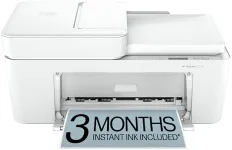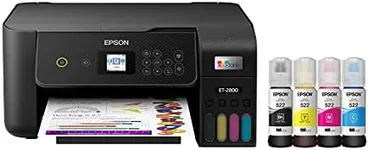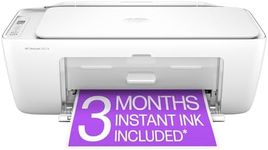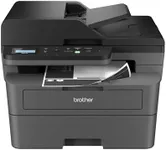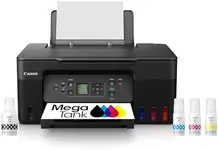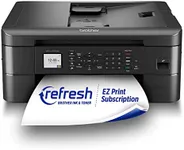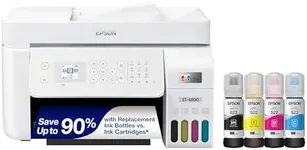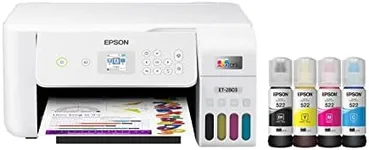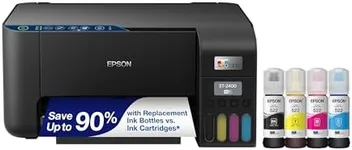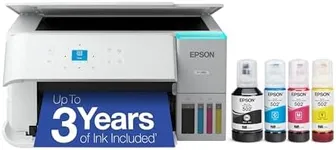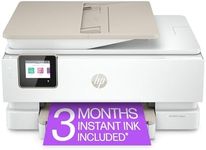Buying Guide for the Best Home Office Printers
Choosing a home office printer starts with thinking about what you'll use it for, such as printing documents, photos, or a mix of both. You'll need to consider how much you'll print, if you want color or just black and white, and whether you need extra functions like scanning or copying. Don’t forget to think about space at home, ease of use, and the cost or convenience of keeping the printer supplied with ink or toner. Balancing these needs will help you find the printer that feels just right for your home office.Printer Type (Inkjet vs. Laser)Printer type is about the technology behind how your prints come out. Inkjet printers use liquid ink and are usually great for color documents and photos, while laser printers use toner, making them faster and more cost-effective for lots of black-and-white printing. If you mostly print colorful pages or photos, an inkjet is likely best for you. But if you churn through high volumes of text or want lower running costs per page, a laser might fit better. Consider what you'll print most often to guide your choice.
Print Speed (Pages Per Minute – PPM)Print speed tells you how quickly a printer can finish a page, measured in pages per minute (PPM). Lower speeds (under 10 PPM) are fine for occasional or light use, while higher speeds (over 20 PPM) are helpful if you often print lots of pages. For most home offices, a moderate speed balances cost and convenience, but think realistically about your weekly or monthly printing habits to choose a speed that matches your pace.
Print Quality (Resolution – DPI)Print quality, often noted as DPI (dots per inch), refers to how sharp and detailed your prints will be. Lower DPI (around 600 x 600) is good for basic text, mid-range DPI (up to 1200 x 1200) is helpful for clearer images and mixed content, and high DPI (over 2400) is ideal for photos or graphics-heavy documents. If you mostly print text, lower to mid-range is enough, but go higher if you need professional-looking presentations or image-heavy work.
All-in-One CapabilitiesAll-in-One printers can scan, copy, and sometimes fax along with printing. This is useful if your work involves digitizing papers, making copies, or sending documents without a computer. If your home office occasionally needs these features, an all-in-one saves space and money over buying separate devices. If you never scan or copy, a basic printer keeps things simpler.
Connectivity OptionsConnectivity describes how the printer links to your computer or devices. Common choices include USB (for a single nearby computer), Wi-Fi (for sharing among multiple devices on your network), and sometimes Bluetooth or direct mobile printing. If you want flexibility, look for Wi-Fi or mobile options, especially if you often use laptops, tablets, or phones for work. A simple USB model works fine if you only print from one spot.
Paper HandlingPaper handling is about the kinds and amounts of paper your printer can manage. Some printers work only with standard sizes and lighter paper, while others handle envelopes, labels, or card stock, and may have larger input trays for fewer refills. If you usually print a standard letter size, you don't need special features, but for custom projects or higher volumes, a printer with flexible or larger trays is a better match.
Operating Costs (Ink or Toner Use)Operating costs focus on how much you’ll spend to keep your printer running, mainly on ink or toner. Inkjet cartridges may need more frequent replacement, while some laser models print thousands of pages per cartridge. Think about how often and how much you print—frequent printers benefit from models with lower per-page costs or optional high-capacity cartridges. Occasional printers may prioritize ease of cartridge finding and swapping.
Size and FootprintSize and footprint simply mean how much space the printer will take up in your home office. Compact models fit better on a small desk, while larger all-in-ones need more room. Measure your available space and think about whether the printer needs to move around or stay put. Choosing the right size avoids clutter and helps everything in your workspace run smoothly.

